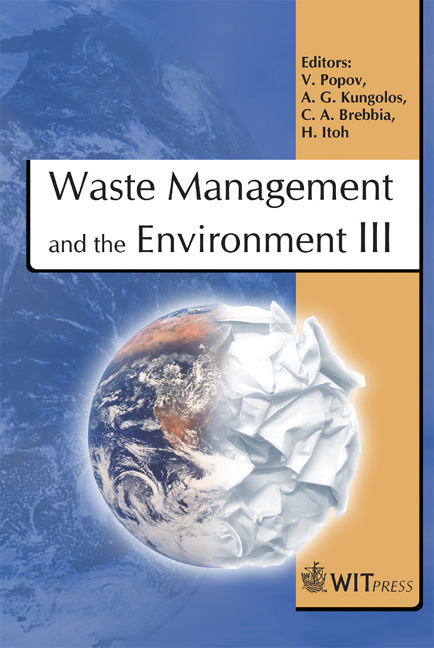The Path Of Packaging Waste In The Secondary Sector
Price
Free (open access)
Transaction
Volume
92
Pages
10
Published
2006
Size
503 kb
Paper DOI
10.2495/WM060141
Copyright
WIT Press
Author(s)
B. A. Curran, D. W. Dixon-Hardy & C. J. Barns
Abstract
The secondary packaging sector specified in various UK legislation states that a large sector of secondary packaging originates from supermarkets. This paper examines how supermarkets deal with secondary packaging waste that encourage recycling. Supermarkets generally have a policy to recycle cardboard, paper and plastic. Packaging is returned to a central depot and this is where the recycling or bailing occurs. Each supermarket chain has its own policy on recycling and waste disposal based on Government guidelines. Anecdotal evidence suggests that manufacturers of typical supermarket products take little interest in to what supermarkets do with their secondary packaging. This paper presents the current UK situation as to the path of supermarket packaging waste. Keywords: packaging waste, secondary sector, supermarket, recycling, re-use. 1 Introduction In the UK alone there is in the region of 400 million tonnes of waste (Chameleon Net [1]), produced each year and a quarter of which is from households, commercial and industry. The remainder is made up of construction and demolition wastes, mining and agricultural wastes, sewage sludge and dredge spoils. This is shown in Figure 1. The most favoured option for disposal of waste is to place it in landfill sites. Recently this option has been questioned as to being the best option as available landfill sites are becoming scarce. In 2003 there were around 2,300 landfills (Environment Agency [3]), and each one was in the region of 28,000 hectares, which in perspective is less than 0.2% of the land of England and Wales.
Keywords
packaging waste, secondary sector, supermarket, recycling, re-use.





